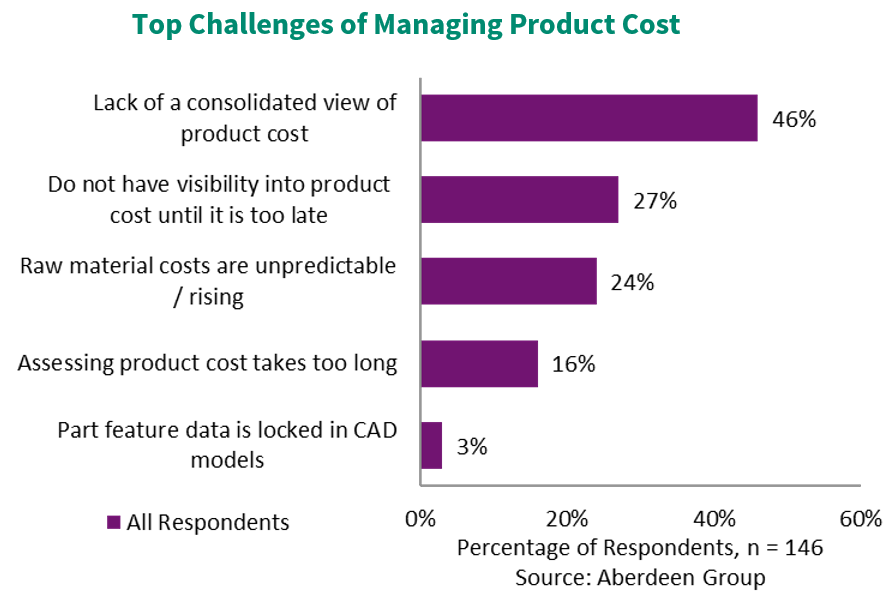Effective Product Costing During Product Design

For manufacturers, the critical factor in determining profits is product costs – the direct material, direct labor, and overhead expenses required to produce goods. Product costing is a cornerstone of financial analytics for any manufacturer, and those organizations with complex or process-intensive processes often find this task cumbersome and unmanageable. But no matter the product, companies must calculate (and manage) product costs to understand and grow profits.
Product cost management challenges exist at every level of the product’s life-cycle. For example, during the product development phase, engineers and product designers often have little insight into the true impact of product costs created by their design decisions, since reducing costs is important for any company, and that’s why learning to managing time is essential for managers and employees, and using a time clock software could be the best option for your company to do this. These choices influence profitability, and not having a clear understanding of costs during development can doom any products ability to grow revenue for the company.
Transparent understanding of costs across the entire value chain is critical to achieving high-caliber product cost management. However, many finance leaders struggle to implement an effective system that has these capabilities. The strain occurs because product costs programs are oftentimes started and managed in isolation and silos of product and sourcing information are decentralized and likely out of sync. A recent Aberdeen white paper, Effective Product Cost Management: Improving Your Net Margin highlights some of the product cost challenges today’s manufacturers are experiencing.

Most companies turn to spreadsheets to calculate product costs in an attempt to gain visibility into cost performance. But manual processes like spreadsheet cost modeling lead to 27% of respondents indicating that cost visibility comes too late and another 16% claiming that it takes too long to calculate costs. And the data silo effect that is often created because of the nature of spreadsheets leads nearly half (46%) of respondents to indicate that they struggle to get a consolidated view of product costs to guide both strategic and tactical decisions.
Manual Processes MUST GO!
When determining product costs, spreadsheets generally offer a limited or skewed view of the company’s cost performance. One example of a spreadsheet modeling limitation is the inability to effectively reflect real-time changes in material and manufacturing costs, hindering the company’s ability to compete and react in an environment of continuous change. Effective product cost management also requires automation of standardized calculation methods, an attribute not available in spreadsheet models.
Limited or no visibility into the consequences of design decisions could easily send production costs over targets, or create a significant expense in re-work to make the product more cost competitive. In many organizations, value engineers tasked with reducing product cost are often invited late in the development cycle, or worse once the production phase has commenced. Change late in the development cycle is often the costliest and can severely restrict the product’s ability to generate profits.
How the “Best-in-Class” Incorporate Cost
“Best-in-Class” companies have well-defined product cost management processes that provide ways to accurately calculate costs at each stage from product development to production. According to the Aberdeen study, “Best-in-Class companies distinguish themselves by providing visibility to all functions across the entire value chain” by paring cost management with product development. These companies are 41% more likely to provide visibility to manufacturing cost implications on design decisions. In addition, the manufacturers that integrate product cost systems with product life-cycle management and enterprise resource planning systems have an 88% likelihood of meeting product cost targets.
Effective Product Costing Requires the Right Tool
Making informed strategic decisions around initiatives involving product cost requires a complete, detailed view of historical performance and the ability to simulate and predict future results. Overall, companies can significantly reduce their production costs, decrease delays to market, and minimize compromised quality by taking the right steps to establish an effective product costing process. This requires a systematic approach across the entire enterprise by deploying a proven set of cost management capabilities that equip business leaders with tools to view, understand, and refine costs at any stage.
Our tool, ImpactECS, delivers accurate and actionable product costing based on your company’s business rules and manufacturing processes, exposing the details of where and how costs are created and identifying the drivers of those costs. By linking data from ERP systems (general ledger, master data), shop floor, data warehouse, business intelligence, and other sources, companies can leverage existing data and ImpactECS’ flexible architecture to create models that deliver insight across the organization.
Want to schedule a demo to learn more about how ImpactECS can improve your product costing? Start Here!